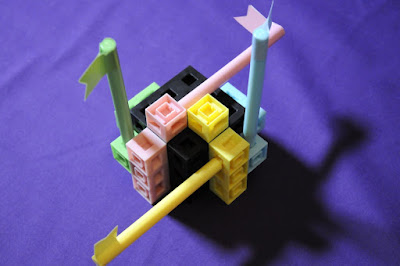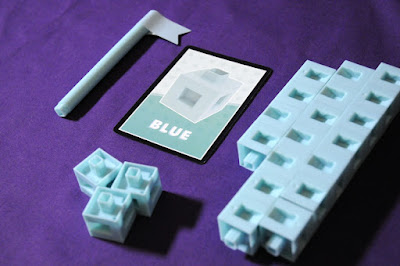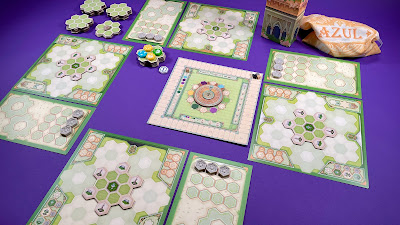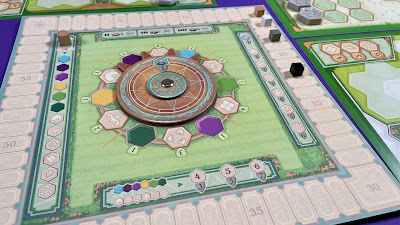The Good
Pastel Color Scheme (+5)
I really like the pastel color scheme on this because it makes it look like a game that has been around for a while. The thing about pastels, at least aesthetically, is that they can be colorful yet not loud at the same time. This is a good way to brand an abstract game like this because you often find yourself in quiet thought. Energy levels for me can be influenced by the aesthetic so this is the right color energy for a game like this.
Easy to Learn and Clarify (+6)
The game is easy to learn but hard to master, which is a recurring attribute I look out for in games lately. Especially because you are having to think in three dimensions to outwit your opponents, that’s always going to be an area of mastery. Part of the reason that this game is definitely easy to learn is simply in the layout of the rulebook. I’m a fan of rulebooks that do not need to be wordy to explain gameplay. I’m often in the situation where we want to get through a bunch of games within a time limit and no one really wants to have to spend too much time sitting around not playing a game. If I can’t read everything beforehand this is great just fresh out of the box to learn and dive into.
In situations you have questions about, the examples are complete and will be detailed clearly in the rulebook. I’ve played my fair share of games where a specific situation isn’t even close to clarified in the rules so the amount of situations actually covered in this rulebook is a relief. This is especially true because of the highly competitive core to the gameplay where people are already heated up about losing control over Ctrl.
Opportunities for more Strategy (+6)
The scoring is the part I look forward to most. If you are familiar with area control, this game is so much more than that and can catch you off guard during scoring. Looking at area coverage from the top and from all visible sides there is a good chance you may completely overlook something. I have not played this enough times yet to decide whether there are clear opening strategies (similar to games like Chess, for example) or if there is a limitation on the amount of control you have in… Ctrl. I intend to find out eventually!
Gameplay is Quick (+6)
The 20 minute play time on the box is true to real life so if you think you can do better and you have folks at the table that are cool with an immediate rematch, you can totally do so two to three times and still have time for more games. As my collection starts to grow I’m much more interested in playing more games with varied experiences than one big game. Ctrl fits in with that goal very well.
The Bad
nothing bad comes to mind!
The Ugly
Unpredictably Flimsy Components (-3)
My one complaint has to do with the relative flimsiness of the flag and placing it. The flag kept popping out of place or straight up knocking out existing cubes when placed. Depending on how badly some opponents want to win a side or have interpreted the state of the game cube, the branches of cubes will start to jut out in horrendous patterns such that they also lose some stability during handling. It’s relatively easy to figure out where pieces need to go back into, so it’s not a deal breaker — but it is inconvenient.
Difficulty: 2/5 for Advanced
Satisfaction Grade: A (93.3%) for Amazing
Worth Your Money? Yes.
You can find copies of this game at Amazon or Game Nerdz, or check with your friendly local game store to see if they can order local!
Note: This review originally appeared on the site Girls' Game Shelf.








